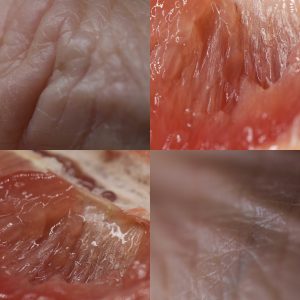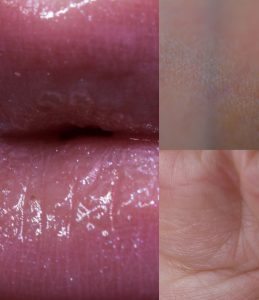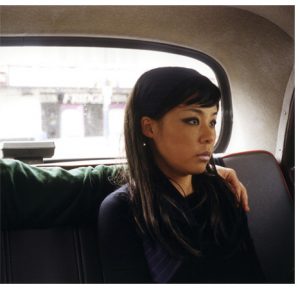Sigalit Landau’s “Barbed Hula” (2000) demonstrates both conceptually and visually the idea of using the human body as a medium of expression in art. Captured as a film, the artist performs hula-hooping, an activity most commonly associated with fitness and/or childhood playground games. The camera edges closer to her stomach, and the cuts upon her skin become a focus, capturing a disturbing self-destruction. Therefore, this exercise has been transformed in an unsettling and perturbing way: the hoop is made out of barbed wire. Flesh has been investigated in art, exploring it as an immediate existence, and Landau reinforces its potential as an artistic medium by scrutinising its “surrounding [of] the body actively and endlessly” (Landau, 2016). Thus, the human body can be presented as more than a biological matter, but as a performative object and/or canvas for expression.
Body art often centres around the materiality of the somatic person. During the twentieth century, artists such as Marina Abramović, Suzanne Lacy and Marc Quinn examined the physicality and limits of our selves, which in turn provoked theorists to write on “the significance and meaning of the concrete body” (Heinrich, 2012). For example, theorists have proposed that what truly defines us as humans is our physical substance, and without our biologies functioning appropriately, we would cease to be alive. Not only this, but the Aristotelian Body Theory proposes that the identity of a person is mostly defined by their organised substance and form.
In “Barbed Hula”, her figure foregrounds the waves of the sea, the colossal earthly boundaries between ocean and land are compared to the skin as a material division. Therefore, the Body Theory can be applied to this concept, as this piece allows the viewer to potentially perceive the body’s potential as just as much an authentically physical matter as the geographical border of the sea.
Bibliography:
(1) Body of Art (2015) London: Phaidon Press Limited, pp.300-367
(2) Urban, T. (2014) What Makes You You? – Wait But Why [online] Available at: https://waitbutwhy.com/2014/12/what-makes-you-you.html [Accessed 1 Dec. 2017].
(3) Heinrich, F. (2012) Flesh as Communication — Body Art and Body Theory [online] Available at: http://www.contempaesthetics.org/newvolume/pages/article.php?articleID=633 [Accessed 1 Dec. 2017].
(4) Sider, T. (2017) The Body Theory [online] Available at: http://tedsider.org/teaching/415/HO_body_theory.pdf [Accessed 1 Dec. 2017].
(5) Landau, S. (2016) Sigalit Landau Barbed Hula [online] Available at: https://www.sigalitlandau.com/barbedhula [Accessed 2 Dec. 2017].



